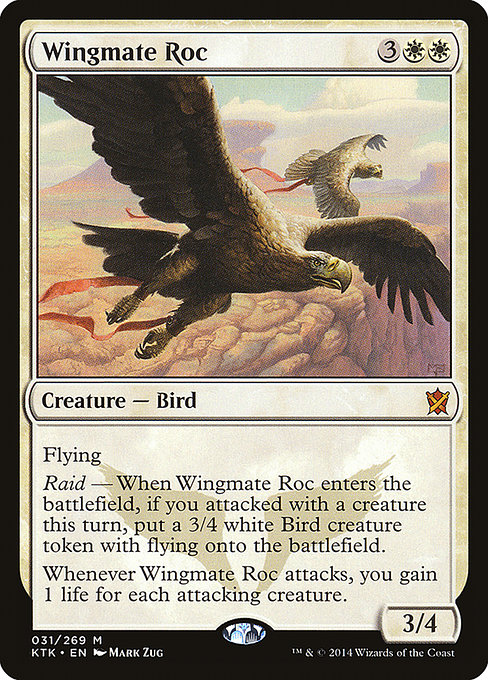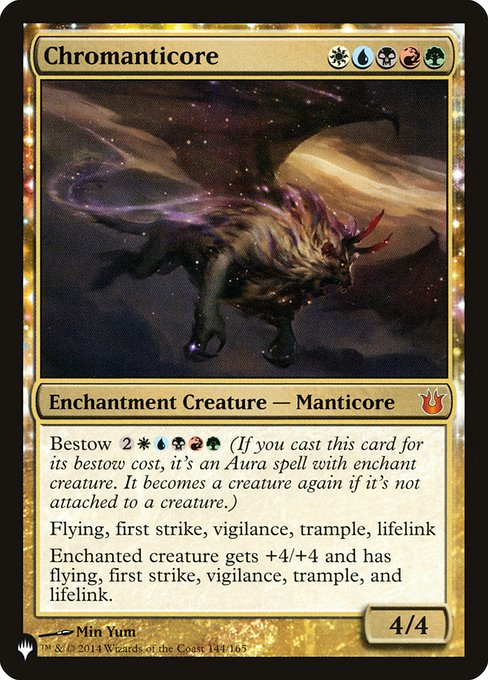Are you a Quiet Speculation member?
If not, now is a perfect time to join up! Our powerful tools, breaking-news analysis, and exclusive Discord channel will make sure you stay up to date and ahead of the curve.
Back in the days of Caw-Blade, it was commonly discussed whether or not cards failed the "Jace test".
If you're unfamiliar with this expression, it essentially measured the impact that a given card would have against an opponent controlling Jace, the Mind Sculptor.
An interesting card from this era was Hero of Bladehold, a card that would be excellent in most Standards. The fact that it would just get bounced and never do anything against Jace meant that it failed the Jace test and was not prime for Standard play.
While the Jace test itself is a rather antiquated piece of jargon, it does establish the way that we need to think if we are to solve a format.
Prior to Jace's dominance of Standard Jace, didn't see much of any play as it failed the Bloodbraid Elf test. Jund Standard and Caw-Blade Standard made it pretty easy to decide what was playable as the Jace and Bloodbraid Elf tests were really all that mattered given the relative dominance of both decks.
Solving the current Standard, however, involves passing multiple such tests.
For example, it's pretty tough to look at an individual card and say that it's good against Goblin Rabblemaster and Whip of Erebos. In formats as open as today's Standard, the question becomes more of whether your general strategy is positioned well against the gauntlet of the format's pillars.
That is, you'll need to have either diversified answers or a strategy that can beat some and ignore others. When preparing for a Theros-Khans Standard tournament, these are the important tests to put your deck to:
The Goblin Rabblemaster and Heroic Test
I lump the heroic deck and any Goblin Rabblemaster deck together because if you're unable to quickly and efficiently answer creatures, you'll fold to both.
The inclusion of protection spells in the heroic decks and the ability of Rabblemaster to win games by itself makes me weary of playing a deck without a very healthy number of removal spells. I like having eight maindeck with the ability to sideboard into more.
Notably, the Rabblemaster test is more easily passed with a handful of quality blockers, but that strategy proves much weaker against the God's Willings and Aqueous Forms of the Heroic decks.
To pass these tests, you need to be able to kill a lot of creatures dead or to win very quickly. Most of the very fast decks of the format are red decks, so they'll almost incidentally be able to accomplish both goals.
I've said it before and I'll likely say it many times--Searing Blood is a very underplayed card that helps both slow the fast decks down while also working to remove the opponent from the game.
The Siege Rhino / Wingmate Roc Test
These two lump together more seamlessly than the above tests, as if you have trouble dealing with one of these cards, you're probably not positioned exceptionally against the other. And, you know, because they're both cornerstones of the PT winning Abzan deck.
Five toughness or two bodies make life very challenging for red decks trying to win in combat. Goblin Rabblemaster can help overpower these monsters, but your Abzan opponents will assuredly have the Rabblemaster test in mind.
In order to beat these cards with faster decks, you'll have to bank on cards like the aforementioned Aqueous Form or just be really fast. Unrealistically fast.
More likely, a deck like Jeskai will need access to something like Nullify or Disdainful Stroke to stop these monsters from ever entering play. Alternatively, the various Jeskai Ascendancy combo decks can choose to ignore the creature part of the Abzan strategy by going infinite with their namesake card.
If you want to go over the top, Hornet Queen is really the way to go. If you get to the point where you're casting Hornet Queens against Abzan, it's going to be tough for them to break through.
Speaking of Hornet Queen...
The Hornet Queen Test
So, this card is real.
Now, this one is easily slower than the aggressive decks. The plan against Hornet Queen decks for beatdown decks is almost always going to be to just be faster.
Realistically, Hornet Queen is going to be the problem for the decks that dedicated too many slots passing the Goblin Rabblemaster test. End Hostilities is a great way to sweep one Hornet Queen, but it's rare that you'll see the Queen in a deck without Whip of Erebos.
All told, Queen + Whip might be as over the top as you can go. I fully recommend trying to go under Hornet Queen unless you're really into the Queen Whip decks. It's going to be very difficult to beat them in any long games.
The major exception to this is the Perilous Vault control decks, though they are held back mostly by their own inadequacies--that is, they play a lot of lands and don't generate much card advantage. If they stumble, they usually fall.
Putting it All Together
So, if we want to pass all three of the above tests, then it looks like we need to be low to the ground with our removal while either being faster than Siege Rhino or at least comparable to Siege Rhino without being cold to Hornet Queen.
If we believe this is a formula for success, then it's not surprising that Brad Nelson Top 8'd a recent Standard Open with the following list:
Four Color Midrange
How good is Chained to the Rocks? Any deck that can make this card work should be playing it. It passes the Rabblemaster and Siege Rhino test with flying colors and also helps us race Hornet Queen and makes it more difficult to raid a Wingmate Roc. I'm not in love with the mana here, but Chained to the Rocks is easily worth stretching for.
Anger of the Gods is an excellent sideboard option as it helps beat the aggressive decks as well as removing a Sidisi and/or Hornet Queen from the game along with all of their little tokens.
At a glance, this deck looks like it struggles the most with the Hornet Queen test, and this piece of sideboard technology definitely helps this while having high utility in other places.
Earlier this week, Jacob Van Lunen posted a pretty crazy list that is very similar but poses a maindeck way to go over the top of Hornet Queen. One that probably isn't on many people's competitive radars:
Two Baneslayers
I think it's pretty clear which slots in this deck are arguably a little rough, but the real talker here is this gem:
The lifelink definitely helps combat its troubles both with its own manabase and with aggressive decks, but its the first strike granted by Chromanticore that gives it the potential to be a real player. If you're crazy enough to try to go over the top of Hornet Queen, then I'd recommend jamming something similar to this.
I wouldn't go nuts speculating on Chromanticore just yet (though I'm sure many have), but this deck is not one that I would immediately disregard. I'd probably cut the Fleecemain Lion and turn the Mardu Charms into something more efficient, but the core (get it?!) of this deck looks real.
~
Whether your plan is to go way over the top with Chromanticore, be faster than everybody with a Heroic build or to try to be uninteractive with Jeskai Acendancy, it's crucial that you know what your answers are to these three pillars of the format. Failing any of these tests will greatly hinder your shot at success in today's Standard.
Thanks for reading.
-Ryan Overturf
@RyanOverdrive on Twitter











